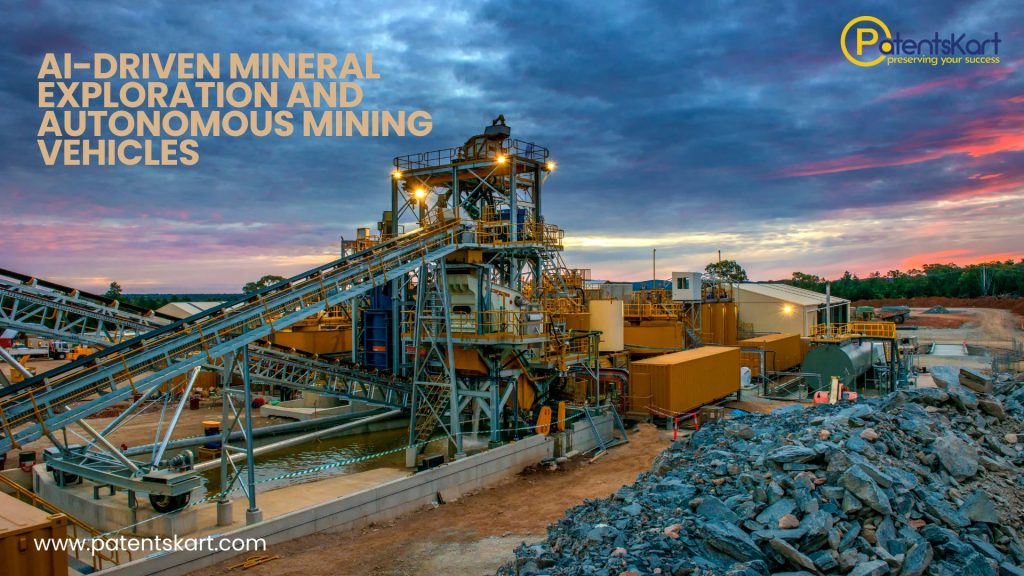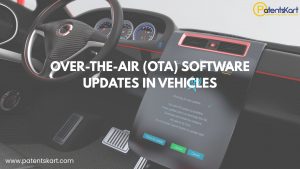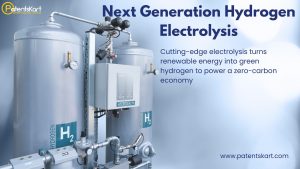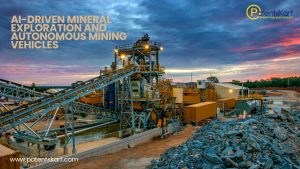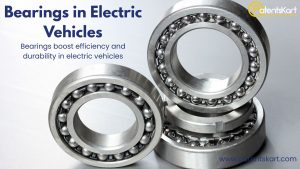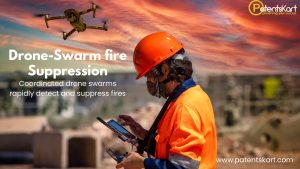The mining sector is experiencing a technological revolution. Traditional methods that relied on manual surveying, heavy machinery, and labor-intensive exploration are giving way to smart, automated, and sustainable approaches. At the forefront of this shift are AI-driven mineral exploration and autonomous mining vehicles, a combined innovation that is reshaping how minerals are discovered, extracted, and delivered to global markets.
By integrating artificial intelligence, robotics, and advanced sensing technologies, AI-driven mineral exploration and autonomous mining vehicles provide safer, more efficient, and environmentally conscious mining solutions. This marks a crucial step toward digital mines of the future.
What Is AI-Driven Mineral Exploration and Autonomous Mining Vehicles Technology?
AI-driven mineral exploration and autonomous mining vehicles represent a convergence of data-driven geoscience and autonomous mobility.
- AI-driven mineral exploration uses machine learning, geospatial data, and predictive algorithms to identify mineral deposits with higher accuracy.
- Autonomous mining vehicles include self-driving haul trucks, loaders, and drilling rigs designed to operate without direct human control.
- Integration of the two enables a complete mining ecosystem—from locating resources to extraction and transportation—optimized by AI and automation.
This technology reduces risks, lowers costs, and enhances sustainability in mining operations.
Why Are AI-Driven Mineral Exploration and Autonomous Mining Vehicles Important?
The importance lies in solving long-standing mining challenges:
- Resource efficiency: AI models predict deposits with greater accuracy, reducing wasted effort.
- Safety: Autonomous vehicles operate in hazardous zones without endangering workers.
- Sustainability: Optimized operations reduce environmental footprints.
- Cost savings: Automation lowers labor and operational costs.
- Scalability: AI and autonomous systems adapt to both large mines and smaller exploratory projects.
These advantages make AI-driven mineral exploration and autonomous mining vehicles a cornerstone of modern mining.
How Do AI-Driven Mineral Exploration and Autonomous Mining Vehicles Work?
The workflow integrates AI algorithms and robotics:
- Step 1: Data collection – Satellites, drones, and geophysical surveys gather geological information.
- Step 2: AI modeling – Machine learning analyzes datasets to identify potential deposits.
- Step 3: Autonomous drilling – Smart rigs validate exploration targets.
- Step 4: Autonomous extraction – Self-driving trucks and loaders transport mined materials.
- Step 5: Continuous monitoring – AI systems track efficiency, safety, and sustainability metrics.
This end-to-end process ensures mining is smarter and greener.
What Are the Benefits of AI-Driven Mineral Exploration and Autonomous Mining Vehicles?
Benefits extend across operational, economic, and environmental domains:
- Improved discovery rates: Higher accuracy in identifying viable sites.
- Reduced downtime: Autonomous fleets operate 24/7.
- Lower costs: Optimized use of fuel, labor, and equipment.
- Enhanced worker safety: Minimizes exposure to hazardous conditions.
- Sustainable outcomes: Reduced waste, emissions, and land disruption.
Together, these benefits highlight the transformative impact of AI-driven mineral exploration and autonomous mining vehicles.
What Are the Applications of AI-Driven Mineral Exploration and Autonomous Mining Vehicles?
Applications span the entire mining value chain:
- Exploration: AI models analyze geological data for new resource identification.
- Drilling: Autonomous rigs conduct precise drilling with minimal supervision.
- Haulage: Self-driving trucks transport ore efficiently.
- Processing: AI optimizes plant operations for energy savings.
- Rehabilitation: AI-guided monitoring supports site restoration efforts.

This holistic applicability ensures industry-wide transformation.
Which Companies Are Leading in AI-Driven Mineral Exploration and Autonomous Mining Vehicles?
Several corporations are pioneering adoption:
- Rio Tinto: Autonomous haulage systems in Australian mines.
- BHP: AI for predictive exploration and fleet management.
- Vale: Leveraging AI-driven maintenance for mining fleets.
- Komatsu: Autonomous trucks and loaders.
- Caterpillar: Industry leader in autonomous mining equipment.
These players validate the commercial success of AI-driven mineral exploration and autonomous mining vehicles.
Which Startups Are Innovating Rapidly?
Startups bring disruptive agility:
- Goldspot Discoveries: AI-powered exploration analytics.
- Exyn Technologies: Drone-based autonomous exploration.
- SafeAI: Retrofitting vehicles with autonomous systems.
- Plotlogic: AI imaging for ore characterization.
- MineSense: Real-time ore data for sustainable extraction.
Their innovations accelerate adoption globally.
What Do Patents and TRL Levels Indicate?
Patent and TRL trends reflect technological maturity:
- Patent activity: Strong focus on predictive exploration algorithms, autonomous fleet management, and AI-based ore classification.
- TRL levels:
- AI exploration algorithms: TRL 7–9, widely validated.
- Autonomous haul trucks: TRL 8–9, fully commercialized.
- Drone-based exploration: TRL 6–8, in scaling stages.
- Predictive maintenance: TRL 7–9, broadly adopted.

These insights show both maturity and innovation potential.
What Are the Challenges in Adoption?
Key barriers to adoption include:
- High upfront costs: Significant investment in equipment and infrastructure.
- Data dependency: AI performance depends on quality geological data.
- Workforce transition: Requires reskilling of human operators.
- Regulatory frameworks: Autonomy in mining is still under evolving regulation.
- Cybersecurity risks: Autonomous systems vulnerable to digital threats.
Addressing these challenges is crucial for widespread adoption.
What Is the Future Outlook?
The future is highly promising:
- Short term (1–5 years): Wider adoption of autonomous haulage systems.
- Medium term (5–10 years): AI exploration becomes standard practice.
- Long term (10+ years): Fully autonomous digital mines powered by AI.
This confirms AI-driven mineral exploration and autonomous mining vehicles as key to the mining industry’s evolution.
How Can PatentsKart Help?
PatentsKart supports innovators in AI-driven mineral exploration and autonomous mining vehicles through:
- Patent landscaping to identify growth opportunities.
- Competitor benchmarking to track market leaders.
- TRL benchmarking to evaluate maturity.
- Freedom-to-operate analysis to minimize risks.
- Commercialization strategies to accelerate adoption.
This ensures stakeholders gain a competitive edge in mining innovation.
Conclusion
The mining industry is at the cusp of a technological renaissance. AI-driven mineral exploration and autonomous mining vehicles are transforming operations by making them safer, more efficient, and more sustainable.
By combining advanced algorithms with robotics, the industry is not just extracting resources—it is reshaping the future of sustainable mining.
FAQs About AI-Driven Mineral Exploration and Autonomous Mining Vehicles
Q1. What is AI-driven mineral exploration and autonomous mining vehicles technology?
It integrates AI for mineral discovery with autonomous vehicles for extraction and haulage.
Q2. Why is it important?
It improves efficiency, reduces risks, and supports sustainable mining.
Q3. Which companies are leading?
Rio Tinto, BHP, Vale, Komatsu, and Caterpillar.
Q4. What challenges exist?
High costs, regulatory hurdles, and workforce reskilling needs.
Q5. How can PatentsKart help innovators?
By offering patent insights, TRL benchmarking, and commercialization support.
Q1. What is AI-driven mineral exploration and autonomous mining vehicles technology?
It integrates AI for mineral discovery with autonomous vehicles for extraction and haulage.
Q2. Why is it important?
It improves efficiency, reduces risks, and supports sustainable mining.
Q3. Which companies are leading?
Rio Tinto, BHP, Vale, Komatsu, and Caterpillar.
Q4. What challenges exist?
High costs, regulatory hurdles, and workforce reskilling needs.
Q5. How can PatentsKart help innovators?
By offering patent insights, TRL benchmarking, and commercialization support.

